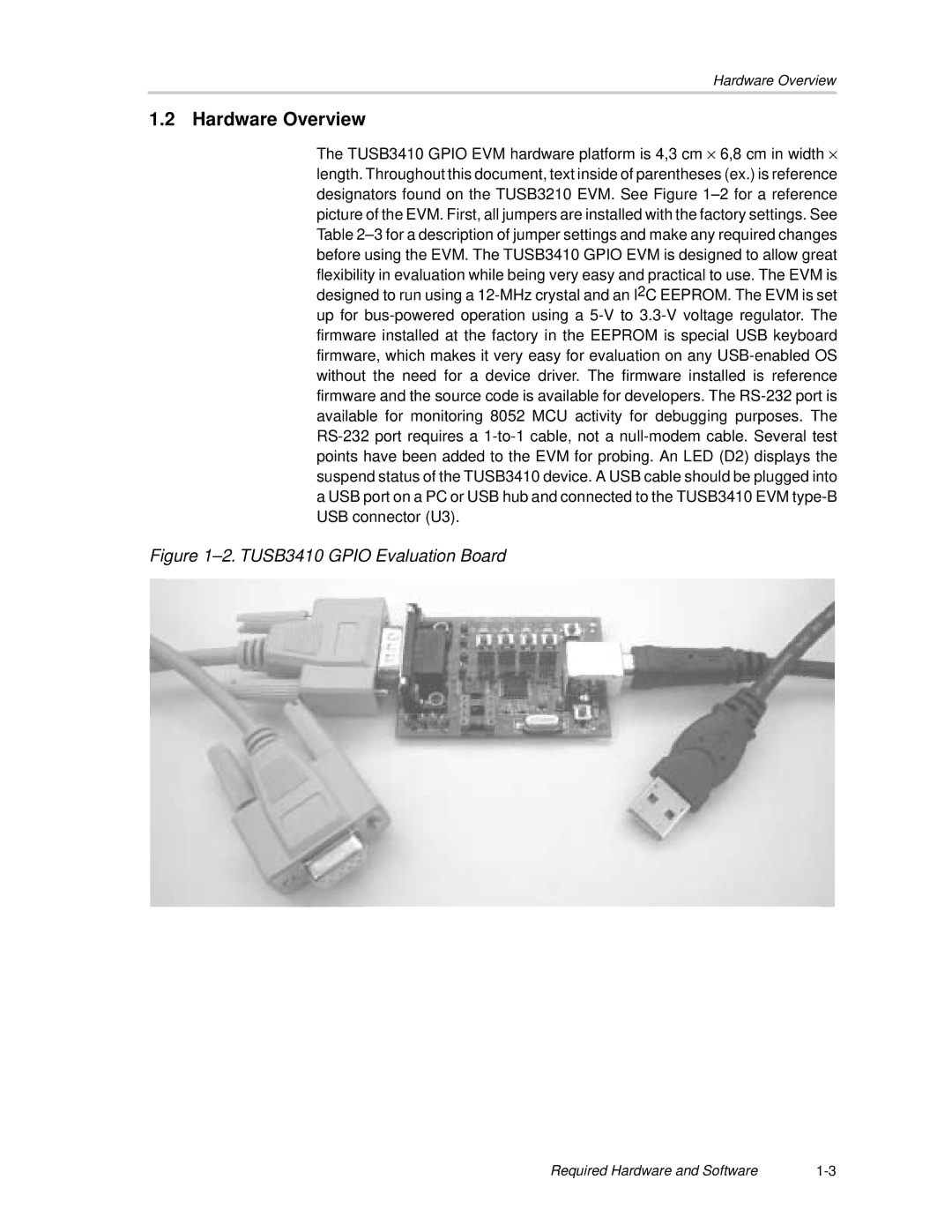
Hardware Overview
1.2 Hardware Overview
The TUSB3410 GPIO EVM hardware platform is 4,3 cm ⋅ 6,8 cm in width ⋅ length. Throughout this document, text inside of parentheses (ex.) is reference designators found on the TUSB3210 EVM. See Figure 1–2 for a reference picture of the EVM. First, all jumpers are installed with the factory settings. See Table 2–3 for a description of jumper settings and make any required changes before using the EVM. The TUSB3410 GPIO EVM is designed to allow great flexibility in evaluation while being very easy and practical to use. The EVM is designed to run using a 12-MHz crystal and an I2C EEPROM. The EVM is set up for bus-powered operation using a 5-V to 3.3-V voltage regulator. The firmware installed at the factory in the EEPROM is special USB keyboard firmware, which makes it very easy for evaluation on any USB-enabled OS without the need for a device driver. The firmware installed is reference firmware and the source code is available for developers. The RS-232 port is available for monitoring 8052 MCU activity for debugging purposes. The RS-232 port requires a 1-to-1 cable, not a null-modem cable. Several test points have been added to the EVM for probing. An LED (D2) displays the suspend status of the TUSB3410 device. A USB cable should be plugged into a USB port on a PC or USB hub and connected to the TUSB3410 EVM type-B USB connector (U3).
Figure 1–2. TUSB3410 GPIO Evaluation Board
Required Hardware and Software | 1-3 |

